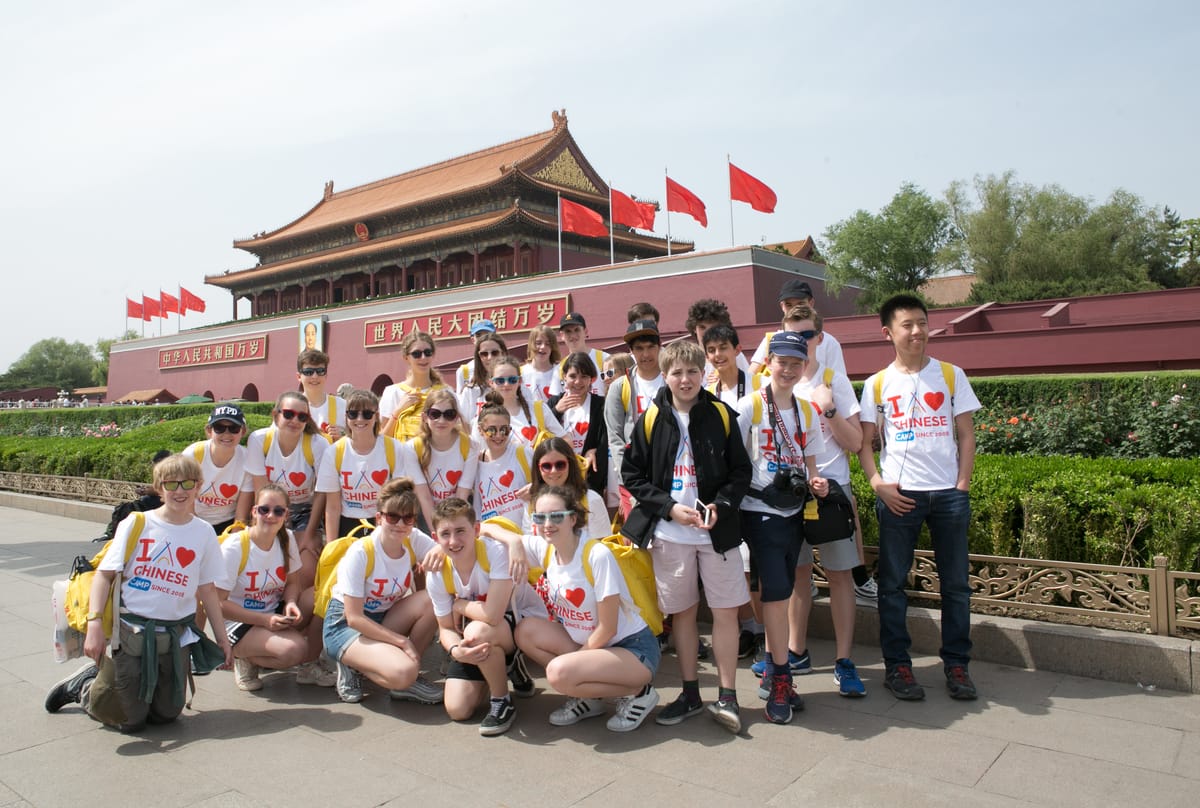Overview
Beijing (formerly called Peking, Beiping, Dadu, Jingcheng, and Yanjing in different periods of Chinese history) is the capital city of the People’s Republic of China, the second largest city in China, and the nation’s political and cultural hub. It is also the focal point for the country’s transportation, scientific and technological development, education and communication. For visitors, Beijing is world famous for its trove of historical sites and enchanting natural scenery. The city offers an abundance of ancient and modern architecture, temples, gardens, and museums and a variety of colorful local flavors and customs.
Why study Chinese in Beijing?
The most important reason to learn Chinese, commonly known as Mandarin, in Beijing is that Mandarin (the official language in China) is widely spoken in Beijing and its surrounding areas. Many other areas in China have their own dialects that are very different from Mandarin. Beijing is the best place where an international student can learn the true Chinese language.
As a language learning destination, Beijing is a vibrant mix between the old and the new. Students who study Chinese in Beijing will be fully immersed in an authentic and traditional environment, while living in a very modern city. With a population of about 17 million, Beijing is a melting pot where students can find an interesting mix of cultures, ethnicities, ages and social groups. International students can experience this exciting and diverse environment in a high quality Chinese language school, where there are students from all over the world, and at the same time can practice their Chinese with the local Beijing people.
Language Schools and Camps in this Destination
In Beijing, Marshall Language Services also offers Chinese language courses for adults and children through the following schools:
- Mandarin House Beijing
- International House Beijing
Images of Beijing, China
Things to Do and See During a Vacation Study
Forbidden City
Surrounded by a 52m-wide moat at the very heart of Beijing, the Forbidden City is China’s largest and best-preserved collection of ancient buildings, and the largest palace complex in the world. It got its name for the fact that it was off limits for 500 years. The palace was home to two dynasties of imperial rule until the Republic overthrew the last Qing emperor. It has been a Unesco World Heritage since 1987.
Temple of Heaven Park
A tranquil oasis of peace and methodical Confucian design in one of China’s busiest urban landscapes, the 267-hectare Temple of Heaven Park is absolutely unique. It originally served as a vast stage for solemn rites performed by the emperor of the time (known as the Son of Heaven), who prayed there for good harvests and atonement.
Summer Palace
The Summer Palace was the playground for emperors fleeing the suffocating summer torpor of the old imperial city. A marvel of design, the palace – with its huge lake and hilltop views – offers a pastoral escape into the landscapes of traditional Chinese painting. Visitors will enjoy its many temples, gardens, pavilions, bridges and corridors.
Beijing Hutongs
Hutong means a lane or an alley, formed by rows of siheyuan (a compound with buildings around a courtyard) where old Beijing residents lived. The alleys give a wonderful glimpse into the old way of life and traditional Beijing culture, and highlight the dramatic changes the rest of Beijing has undergone. In the hutongs, it is possible to eat and participate in classes for traditional Chinese activities, such as cooking, calligraphy, paper cutting, knot making, dancing and playing mahjong.
Lama Temple
This exceptional temple is a glittering attraction in Beijing’s Buddhist culture. In this temple, fabulous frescoes, magnificent decorative arches, tapestries, astonishing carpentry, Tibetan prayer wheels, tantric statues and a superb pair of Chinese lions mingle with dense clouds of incense.
Tiananmen Square
Flanked by stern 1950s Soviet-style buildings and surrounded by white perimeter fences, the world’s largest public square (440,000 sqm) is an immense flatland of paving stones at the heart of Beijing. Visitors can watch a flag-raising ceremony performed by a troop of People’s Liberation Army (PLA) soldiers at sunrise and at sunset.
Chairman Mao Memorial Hall
The Soviet-inspired memorial hall was constructed soon after Mao died in September 1976, and is a prominent landmark in the middle of Tiananmen Square.
National Museum of China
Beijing’s premier museum is well worth visiting, with its Ancient China exhibition containing dozens of stunning examples of ceramics, calligraphy jade and bronze pieces dating from prehistoric China through to the Qing dynasty.
Panjiayuan Market
The Panjiayuan Market is the best place in Beijing to shop for arts, crafts and antiques. It contains everything from calligraphy and cigarette-ad posters to Buddha heads, ceramics, Qing dynasty–style furniture, Tibetan carpets and Cultural Revolution propaganda posters.
Beihei Park
Located in the center of Beijing, Beihai Park, also known as Northern Sea Park, is one of the oldest, largest and best-preserved ancient imperial gardens in China. This ancient garden, with over 1,000 years’ history, is a perfect integration of magnificent imperial palaces and solemn religious constructions.
The Great Wall of China
One of the greatest man-made wonders of the world, the 2000 + year old Great Wall of China is a perfect day trip for travelers based in Beijing. Students can visit one of four main sections — Badaling (the most well-known and accessible for travelers of varying mobility), Mutianyu (well-restored but much less crowded, and there is an unforgettable, three-minute-long toboggan ride from the top of the eastern end to the bottom), Simatai (a crumbling, rugged stretch of wall), and Jinshanling (for serious hikers).
How to Arrive at your Language Course
By Air
Beijing Capital Airport, located about 30 kilometers northwest of the central city, is China’s major international airport. Scheduled flights connect Beijing with Shanghai, Canton, and all other major Chinese cities and tourist sites. There are direct flights to many international capitals, including New York, Los Angeles, London, Paris, Rome, Tokyo, and Berlin. Nanyuan Airport, south of Beijing, is used for domestic flights.



